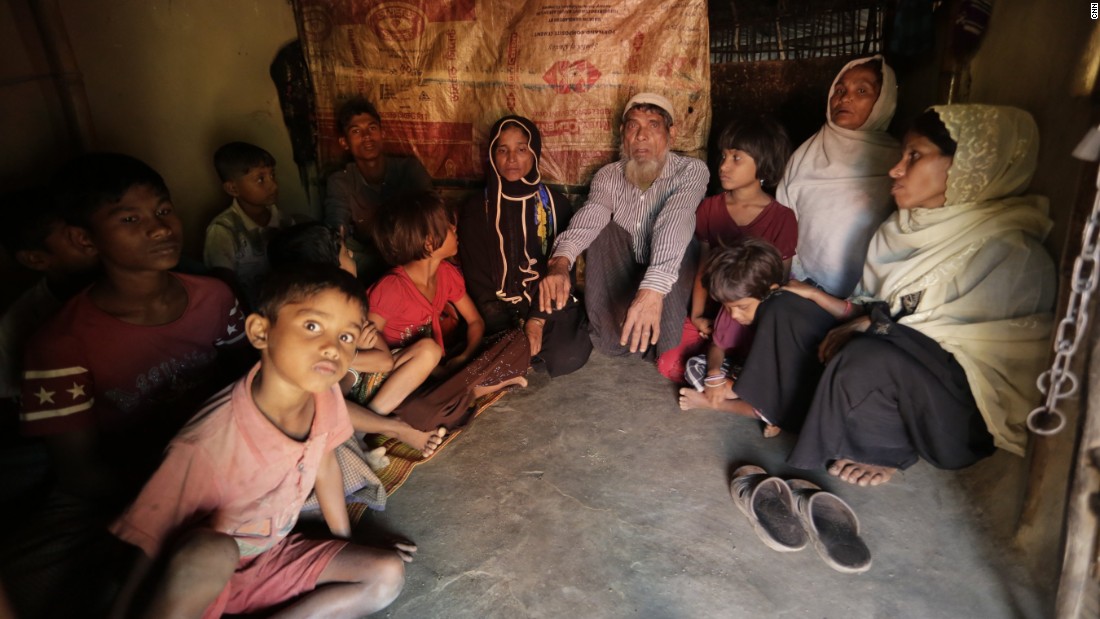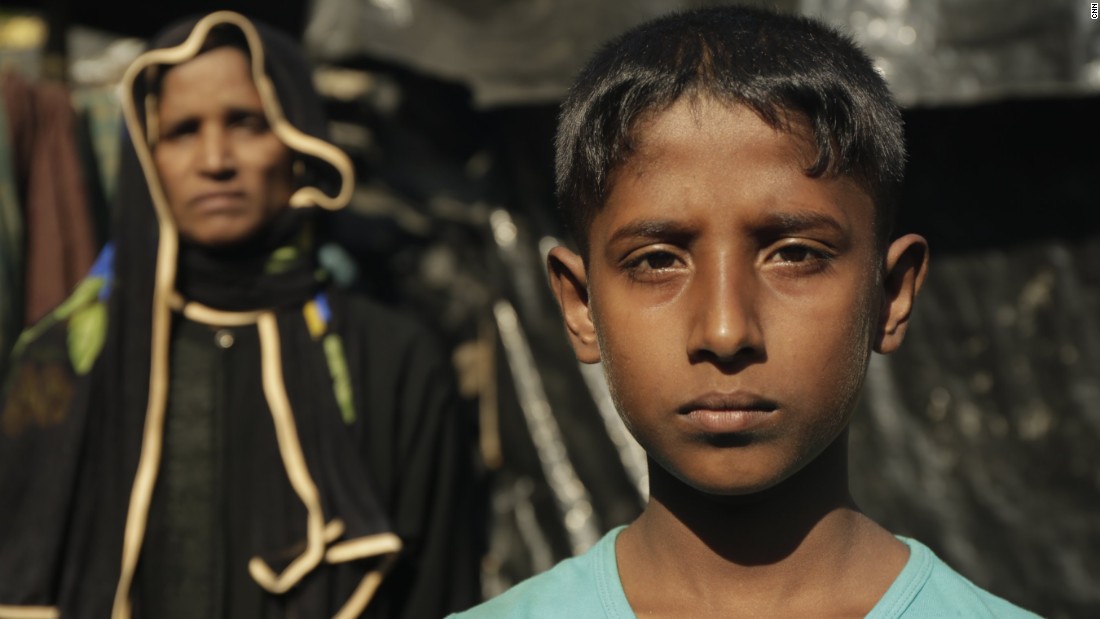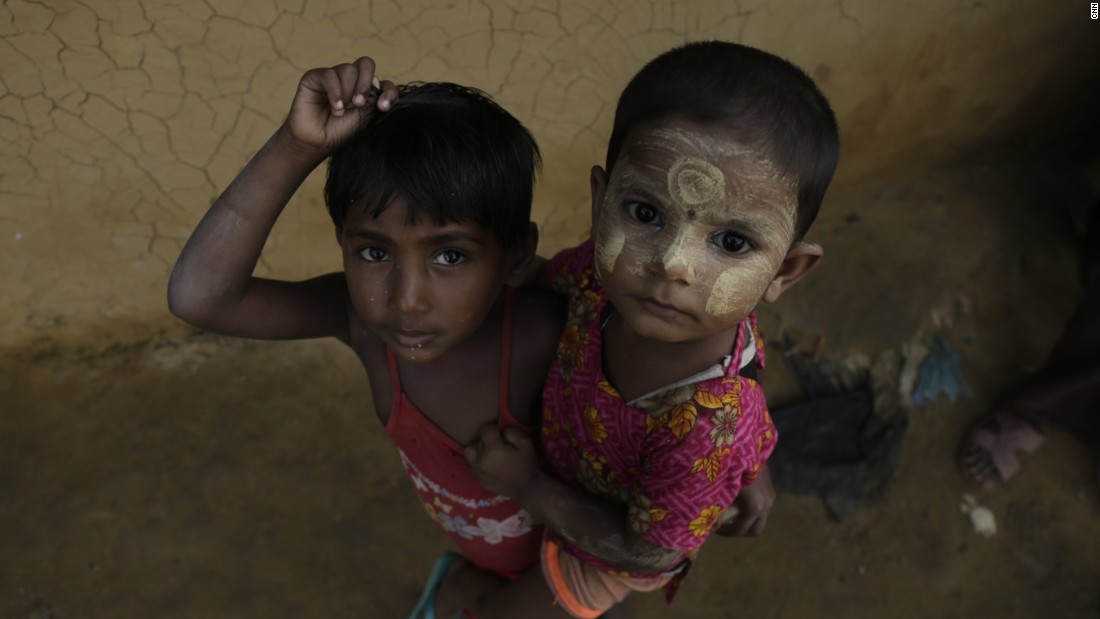They come by the thousands.
Rohingya refugees from Myanmar’s northwestern Rakhine state are flooding across the border into Bangladesh.
They’re fleeing violence that has plagued the state for weeks. Some refugees told CNN they suffered rape, torture, or saw their homes burned down and family members executed.
“If (the military) finds any boys aged above 10 years old, they kill them. Men are also being picked up by the military,” said Lalu Begum.
“When the military came, we fled from our home. I don’t know if my husband is dead or alive.”
‘Ethnic cleansing’
Begum, currently staying at the Kutupalong camp in southern Bangladesh, told CNN several women in her village were raped by regime soldiers.
“When they see pretty ladies, they ask for water, then they get inside the house and rape them,” she said.
An estimated one million Rohingya live in Rakhine, where they are a persecuted, stateless ethnic minority. The government of Myanmar, also known as Burma, does not officially recognize the Rohingya, regarding them as illegal Bengali immigrants, despite many being able to trace their roots back in Myanmar for generations.
John McKissick, a UN refugee agency official based in Bangladesh, said the Rohingya are “the most oppressed people in the world.”
“It seems to be the aim of the Myanmar military to ethnically cleanse this population,” he told CNN.
Deadly path
The refugees in Kutupalong said they left their homes in the middle of the night, trekking from village to village to try and evade the soldiers and make it to the Naf River to cross into Bangladesh.
“It took me four days,” Begum said. “When our village was set on fire, we moved to another village, and continued to change our position. This way we came to the riverside.”
Along the perilous journey, many lost family members.
“When we started our journey, there were six of us. We lost three members of our family,” Lalu Begum’s sister-in-law Nassima Khatun told CNN.
“My husband and son were killed, and another son went missing.”
CNN is unable to independently verify these reports from refugees — or the videos posted on social media appearing to show the violence and casualties inside Rakhine — as the Rohingya area is currently under what the UN terms “lockdown,” with access to media and aid agencies blocked.
“We have requested the government to provide us with access, so we can estimate the actual numbers,” McKissick said.
“We ourselves see (the refugees) fleeing across the border, coming inside Bangladesh, in the forests, on the main roads, in the villages, in the makeshift camps.”
Turned back
For many, reaching the border does not mean an end to suffering.
Bangladesh has tightened security to try and push refugees back, as the country struggles to cope with the influx.
Scores of people took to the streets of the capital Dhaka on Friday denouncing the alleged atrocities and urging the Bangladesh government to open the border.
Thousands from Myanmar have already crossed, and the Bangladeshi government said “thousands more have been reported to be gathering at the border.”
The government even summoned the Dhaka-based ambassador of Myanmar on Wednesday to express concern at the “continued deteriorating situation (in Rakhine) following the country’s military crackdown.”
Myanmar’s government has denied reports of human rights abuses in Rakhine, claiming that the military is carrying out “clearance operations” targeting suspected “violent attackers” who killed nine border guards on October 9, according to state media.
Since then, state media said more than 100 people have been killed, and around 600 others have been arrested.
“The scale of the problem inside northern Rakhine State where Rohingyas are actually trapped is deplorable,” McKissick said.
“The government of Myanmar is engaging in collective punishment against the Rohingya ethnic minority.”
Villages destroyed
A recent Human Rights Watch report showed what the group estimated to be 1,250 Rohingya homes burned down by the authorities — a claim the government has denied, saying that “attackers” from the villages carried out the arson.
“These alarming new satellite images confirm that the destruction in Rohingya villages is far greater and in more places than the government has admitted,” said Brad Adams, Asia director at Human Rights Watch.
“The apparent arson attacks against five Rohingya villages is a matter of grave concern for which the Burmese government needs to investigate and prosecute those responsible.”
Nobel prize laureate and pro-democracy icon Aung San Suu Kyi has faced criticism for her administration’s silence on the issue, a problem which McKissick said shows a lack of control.
“Myanmar needs to follow international law and respect human rights, and they’re not doing that right now, and it seems that the democratically elected government does not have control over the military,” McKissick said.
CNN has reached out to Suu Kyi’s office for comment on multiple occasions but has not received a response.
No going back
Begum said it was the government’s lack of action that caused her to leave.
“In our villages where we use to live, there are no Rohingya Muslims left. All of them fled from their homes,” she said.
For Nassima Khatun and many other refugees, returning to Myanmar is simply not an option, at least until the violence is over.
“We left all of our belongings back there. We left everything to save our lives. Now, how can we go back?” Khatun said.
“They will kill us.”
Source: CNN













